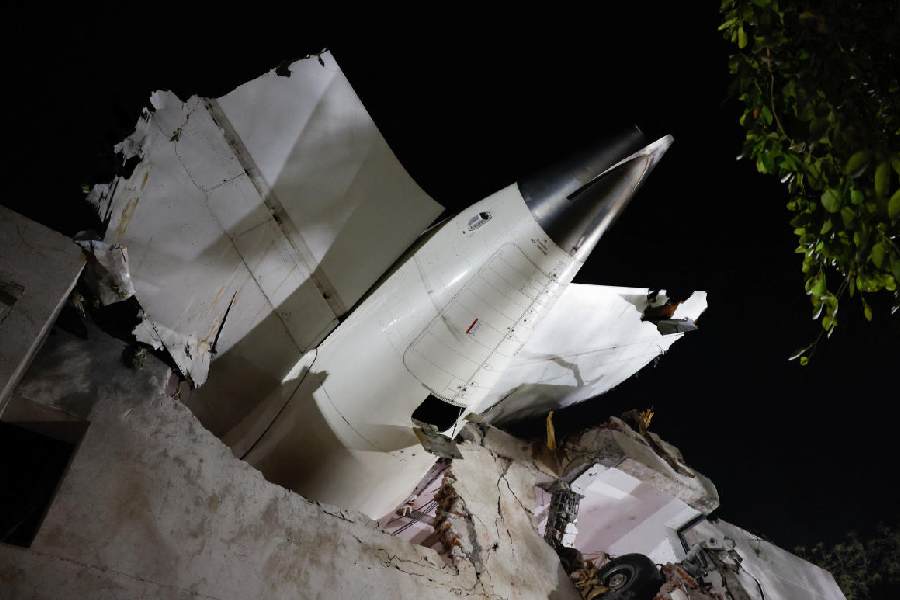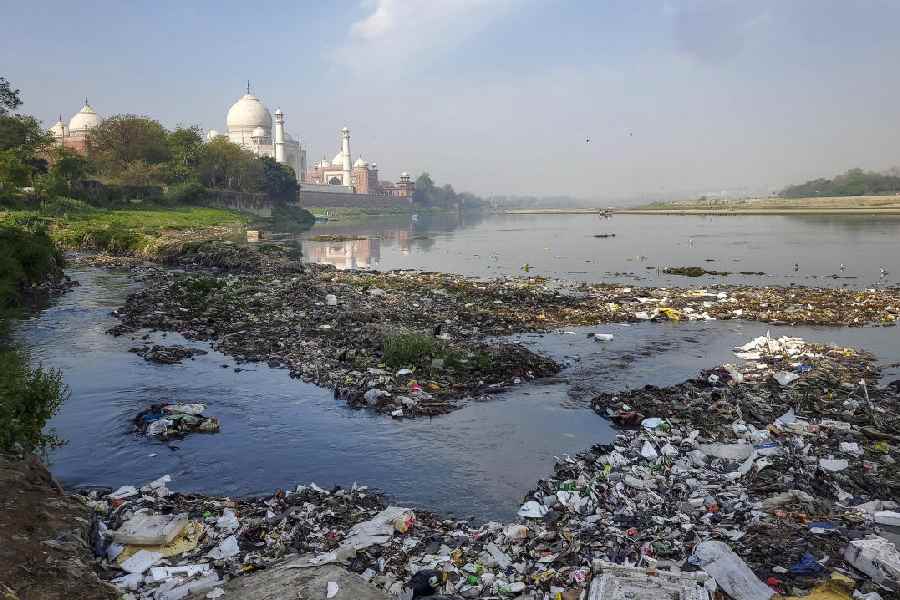 |
Sophie Bangs walks through a technicolour city and runs into her old friend, Stacia Vanderveer. “I survived the apocalypse and all I got was this lousy tee-shirt,” says Stacia’s t-shirt. Sophie has just been relieved of her duties as the superhero, Promethea. Her father is as good as back from the dead and the world has ended. The new world is “radiant, heavenly” and truly liberated. The mayor’s wife wears a burlesque wedding dress; the six-year-old chairperson of the Royce Temple Foundation announces, “Everybody can stay up as late as they want”; and kisses are four-dimensional. In the graphic novel, Promethea, written by Alan Moore, apocalypse is a revelation (a young man’s t-shirt says, “Thy kingdom come”). Promethea has announced, “Rejoice, your world is ended. Time’s jail-yards are unlocked.” Indra, Jupiter, Hermes, Thoth and other pagan gods look on. Moore’s doomsday recalls Krishna’s advice to Arjuna: one must do what must be done, for “Time grown old… [will] annihilate the worlds even without you”. Apocalypse has taught the new world to “live knowing that you are already dust”. It “scrunches” Time into one moment; it is the great leveller, because “separation is an illusion”.
Promethea’s unusually optimistic version of doomsday is qualified by the fact that the world that dies is near-dystopic and needs to be ended. But not all versions of doomsday are quite as reassuring as Moore’s. For example, Kazuya Minekura’s manga, Stigma, is set in a post-apocalyptic, post-war dystopia. The protagonist has been leached of his memories and his name. The sun refuses to shine, birds are extinct and one must wander “like a cat looking for a place to die”. Garth Ennis depicts a terrifying apocalypse in Just a pilgrim. The sun has expanded and scorched the earth. Survivors must fight hunger, thirst and each other. Even here, the protagonist’s real name is not used. The end of the world is a lesser evil used to mask a far more frightening prospect: the erasure of history and all of humanity’s standards and credibility, and a regression into primal, dog-eat-dog survival tactics.
In comics and graphic novels, apocalypse acts mostly as a framework to justify alternative realities. It is a convenient backdrop for the element of the fantastic that most graphic novels aspire towards. The day of reckoning is, in a way, the limit to imagination; it is the ‘worst’ that can happen to human civilization. For texts fundamentally dependent on images — given as they are to excesses of expression — the idea of the apocalypse creates a space of extremes. It legitimizes storylines that may otherwise seem too far-fetched. In Watchmen, for example, Moore depicts doomsday as part of a strategy to bring about peace in the world (picture). A vigilante, Ozymandias, foresees the possibility of a nuclear showdown. He engineers a ‘good’ apocalypse to avert the looming “accidental apocalypse”. He is an embodiment of the chaotic good, explaining his logic in these lines from the stele of the Pharaoh Merneptah: “Canaan is devastated, Ashkelon is fallen… Israel is desolate and her seed is no more, and Palestine has become a widow for Egypt. All the countries are unified and pacified.”
The name Ozymandias might remind fans of another, less famous, character. This Ozymandias is the oracle, scribe and slave to one of the most notorious Marvel supervillains called Apocalypse. Apocalypse is thousands of years old, and has travelled through Time. He maintains a team of enslaved mutants called the Horsemen of Apocalypse. And among the few Marvel villains considered mightier than Apocalypse is Thanos, who destroys half the universe — ending worlds — to impress his beloved, Death.
PRIYADARSHINI GOSWAMI










